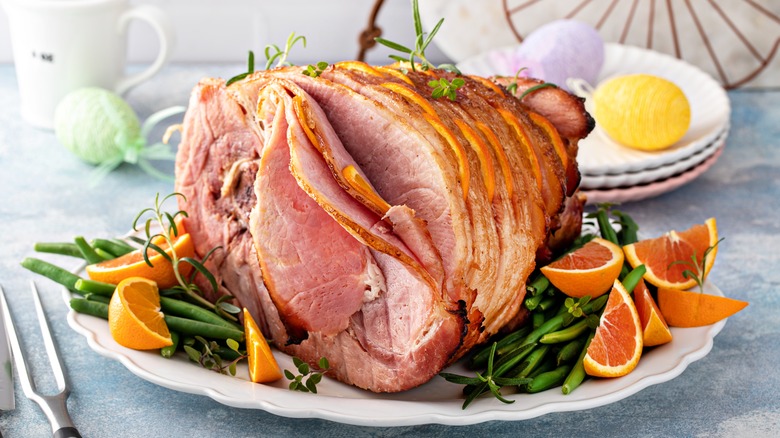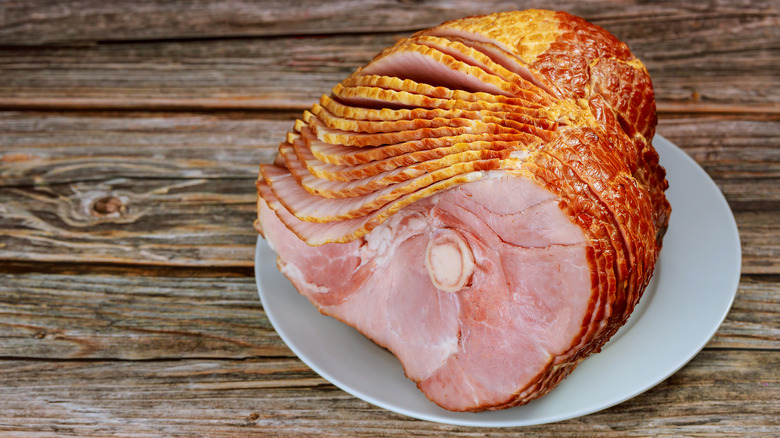The Benefits Of Cooking With Bone-In Ham
A bone-in ham may be one of the most underrated centerpiece roasts. The smoked pork leg is a perennial holiday favorite on dinner tables, but its upsides have almost come to work against it, making it seem more routine and less special. Its unfussiness and ease of cooking mean it doesn't get nearly the attention that turkey gets on thanksgiving, and its affordability means it doesn't carry the indulgent cachet of a duck or standing rib roast. Of course, none of those image issues matter when it's set on the dinner table, with its sweet, smoky, and salty combo that will have your family hacking off slices with abandon, even days after the meal.
Part of the appeal of ham is convenience, which AllRecipes notes primarily comes from most being pre-cooked through boiling or smoking. Ham is a set-it-and-forget-it dinner that needs nothing but a simple glaze and time in the oven to be brought to serving temperature. That convenience makes it reasonable to opt for a boneless ham as well. Carving around a bone can be a chore and makes for a less-than-photogenic result. Plus, if it is already cooked, then what's the difference?
Bone-in ham is juicer and more flavorful
You might not get the perfectly clean slices you want, but bone-in ham has clear benefits over its deboned counterpart. According to MyRecipes, bone-in hams will be more juicy than boneless, resulting in more tender, well-cooked meat. This comes from a few different factors. As Serious Eats notes, bones help moderate the temperature in meat, which slows down cooking and allows the fat to render. Bones also have fat and tissue attached to them that gets lost when removed from your ham. That fat adds moisture and flavor to your meal, giving your bone-in ham an extra savoriness that's lost with the convenience of boneless.
Keeping the bone also has the added benefit of leaving you with leftovers that can be turned into stock and dishes like pea soup. As the Pioneer Woman states, traditionally, these dishes are made with a ham hock, a fatty, boney cut from a pig's leg, but the bone from your ham has many of the same qualities. It has already been smoked, and then cooked for dinner, so it will have a rich flavor to impart the broth, and the bone-in leftovers will likely have more meat on them than a ham hock does. That means even more delicious, hammy meals beyond your croque monsieur. Better flavor and takes your dollar further at the same time. That's the power of the bone.

